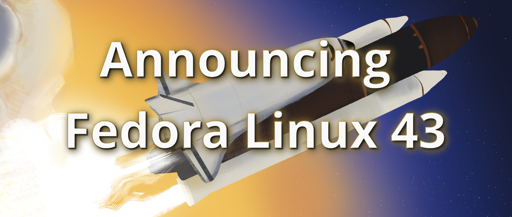ashx64
- 4 Posts
- 11 Comments

 3·3 days ago
3·3 days ago“We do <thing > because we always did before <thing 2>” is not a good point
I didn’t mean it in a “this is better way”. I’m just saying that Wayland was designed around the idea of client side decorations, not server side decorations. Gnome has stuck to the more purist vision of Wayland, which makes sense since I believe they were its biggest proponent.

 4·3 days ago
4·3 days agoThat can be dropped eventually too. Compositors like Niri don’t implement Xwayland support directly, and instead use Xwayland Satellite.

 142·3 days ago
142·3 days agoThe for argument is basically the following
- Wayland as a protocol was designed around CSDs, protocols for SSDs came years later
- Having the client control the CSDs simplifiies things for the compositor and apps
- The compositor has less things to implement and test
- Modern apps tend to prefer CSDs anyway since it provides more flexibility, very common on MacOS and Windows
- It’s difficult to coordinate things between the client and compositor.
- Something that annoys me about KDE is that they do this headerbar look where the top part of the application will match the color of the the titlebar. However, the top part of the application is drawn by the application and the titlebar is drawn by the compositor. But when the color changes (such as going from unfocused to focused), they do not update at the same time, so for a frame or few the top part of the application is a different color than the titlebar. That wouldn’t happen under CSDs.

 71·6 days ago
71·6 days agoI hope the performance significantly improves by then. Beta 1 felt pretty rough to me. And also, animations.

 10·9 days ago
10·9 days agoThe main reason I hear is that it maximizes screen usage and helps avoid/limit the tediousness of having to manage windows.
Not what you’re asking for, but I’ll give you my perspective as someone who’s tried tiling on and off and overall don’t like it.
- Applications work best at certain aspect ratios, having them automatically tiled to different aspect ratios can be annoying
- Some windows windows/pop-ups have no business being tiled. Like some Yes/No dialogs (not all windows specify a max size which would avoid triggering the tiling) or a simple calculator. And you can specify which ones to have floating, but it requires setup.
- Sometimes it ends of causing more work than floating environements. Most of the time I only have a max of 2 windows open, but occasionally I’ll quickly try to do something then end up with 4-5 windows, at which point that’s too many windows and I need to reorganize stuff to continue working. But that usually wouldn’t be an issue in a floating environment.
- Worst of all, just setting up a tiling environment is a nightmare. You have to configure the actual compositor/WM, which tools you want to use with it (bar, launcher, screenshot tool, notifications, screenlocker, etc) and configure all those too, ideally with some basic theming to make them look coherent. But inevitably you end up with missing functionality especially in the modern area where an app might be sandboxed or expecting all xdg-portals to be implemented, which most compositors don’t do.
Cosmic is exciting in this regard since it aims to be a fully-featured floating and tiling environment. You could just toggle between them as necessary (or have them on separate workplaces). You also get much better portal support.

 2·25 days ago
2·25 days agoAs it stands today, sudo-rs is the default sudo implementation on Ubuntu 25.10, and uutils’ coreutils has mostly replaced the GNU implementation, with a few exceptions, many of which will be resolved by releases in the coming weeks. These diversions back to the existing implementations demonstrate that stability and resilience are more important than “hype” in our approach: I expect us to have completed the migration during the next cycle, but not before the tools are ready.

 1·26 days ago
1·26 days agoYes. They also reverted some of the still unfinished stuff to use the Gnu versions until the Rust versions are ready.

 2·28 days ago
2·28 days agoTrue, but my issue with OpenBSD is that the performance is really lacking in terms of desktop smoothness. It feels like sub 60 fps compared the smoothness of Linux and FreeBSD.
I hope it’s just a current driver incompatibility and not related to their hardening. Will try again once 7.8 releases.

 7·28 days ago
7·28 days agoMaybe Secureblue?
That also comes with its own hardened browser based on GrapheneOS’s.
And if you don’t go with Secure blue, I’d recommend using something Chromium based, probably Brave. I know that’s a controversial choice, but in terms of security and ad blocking, it’s one of the better options.


Sideloading or preinstalling?
Sideloading already existed, but only for ostree flatpaks. Flatpak also supports OCI flatpaks, but the support for those aren’t as good, hence the previously missing side loading support.